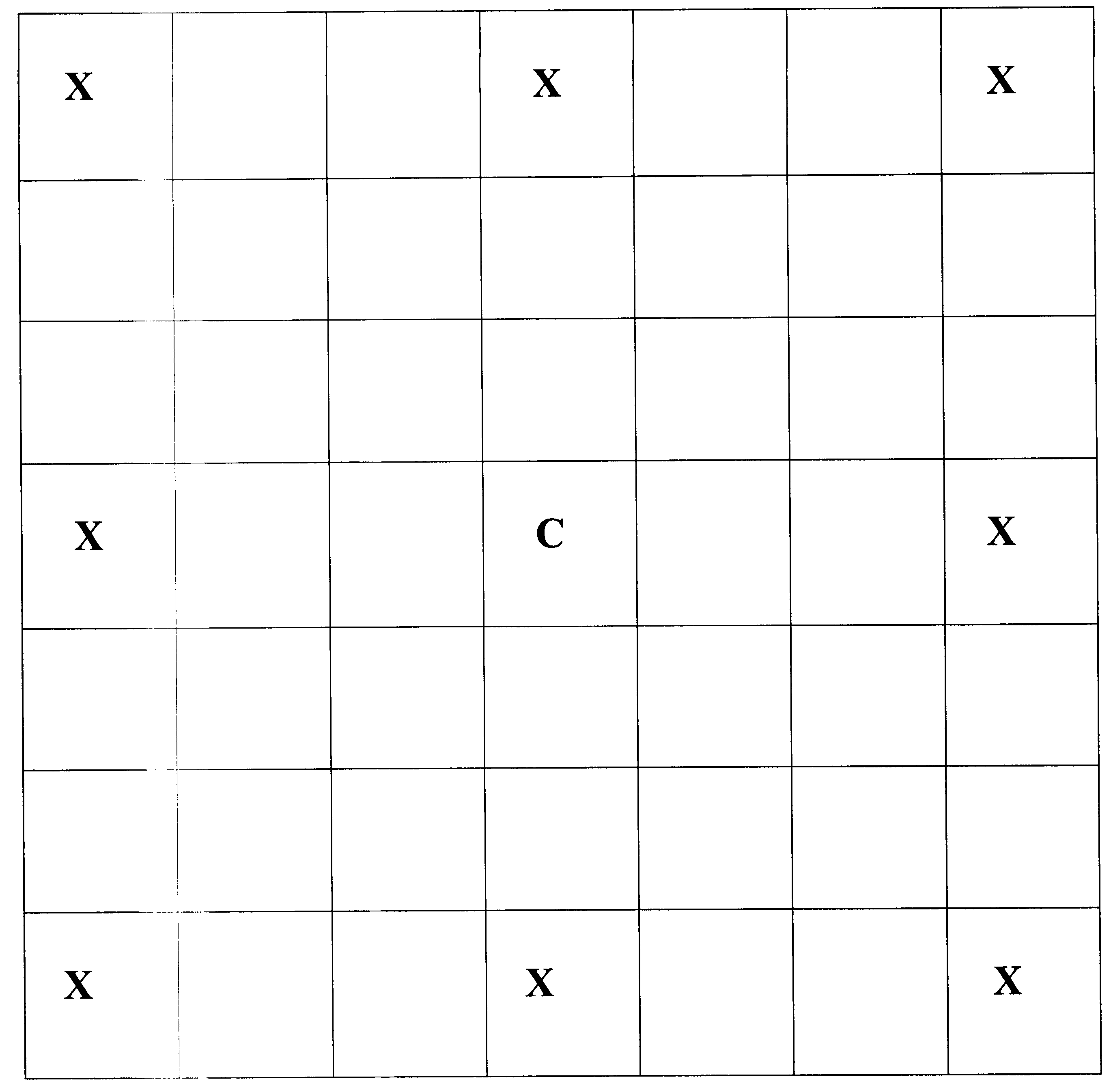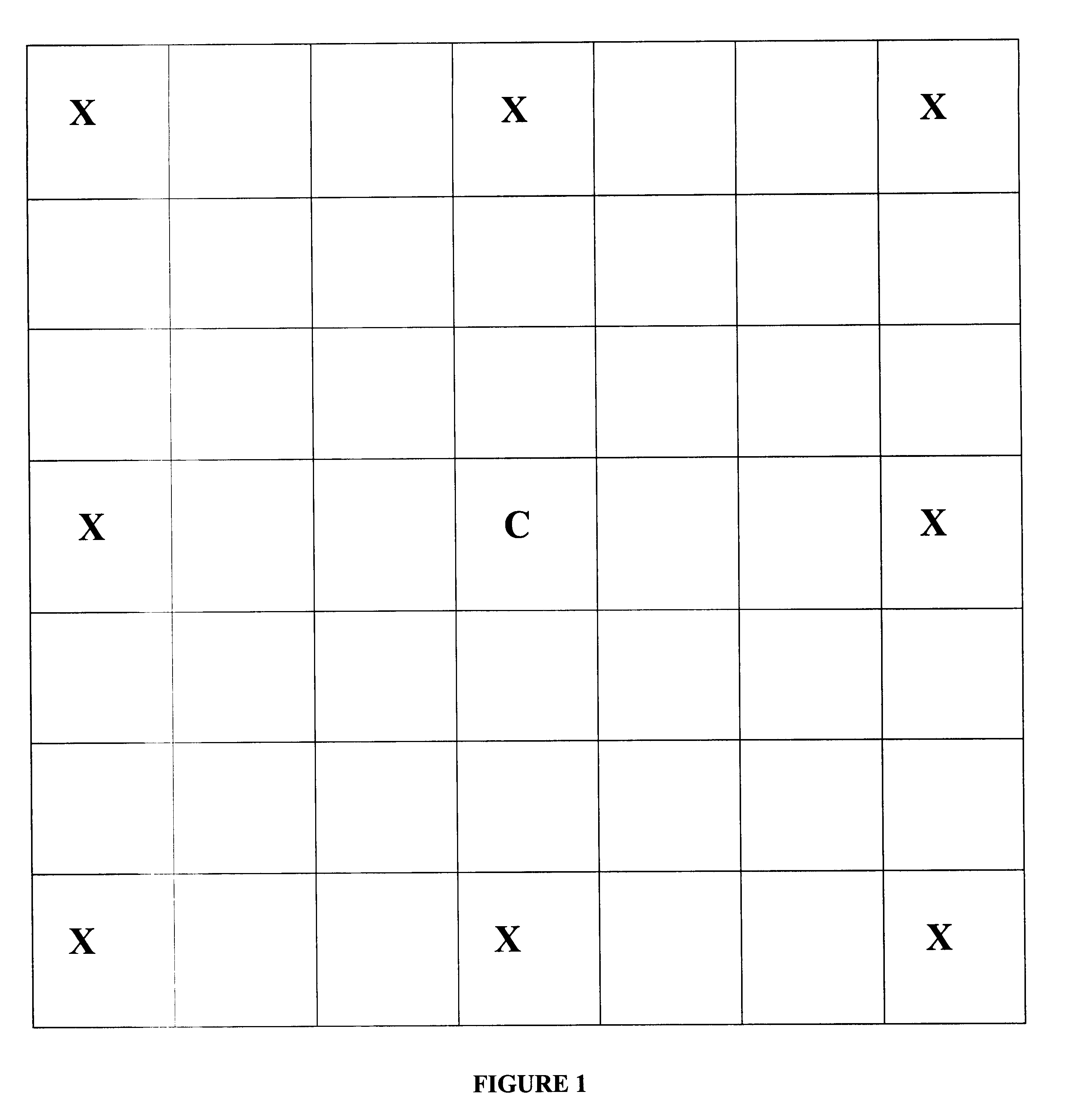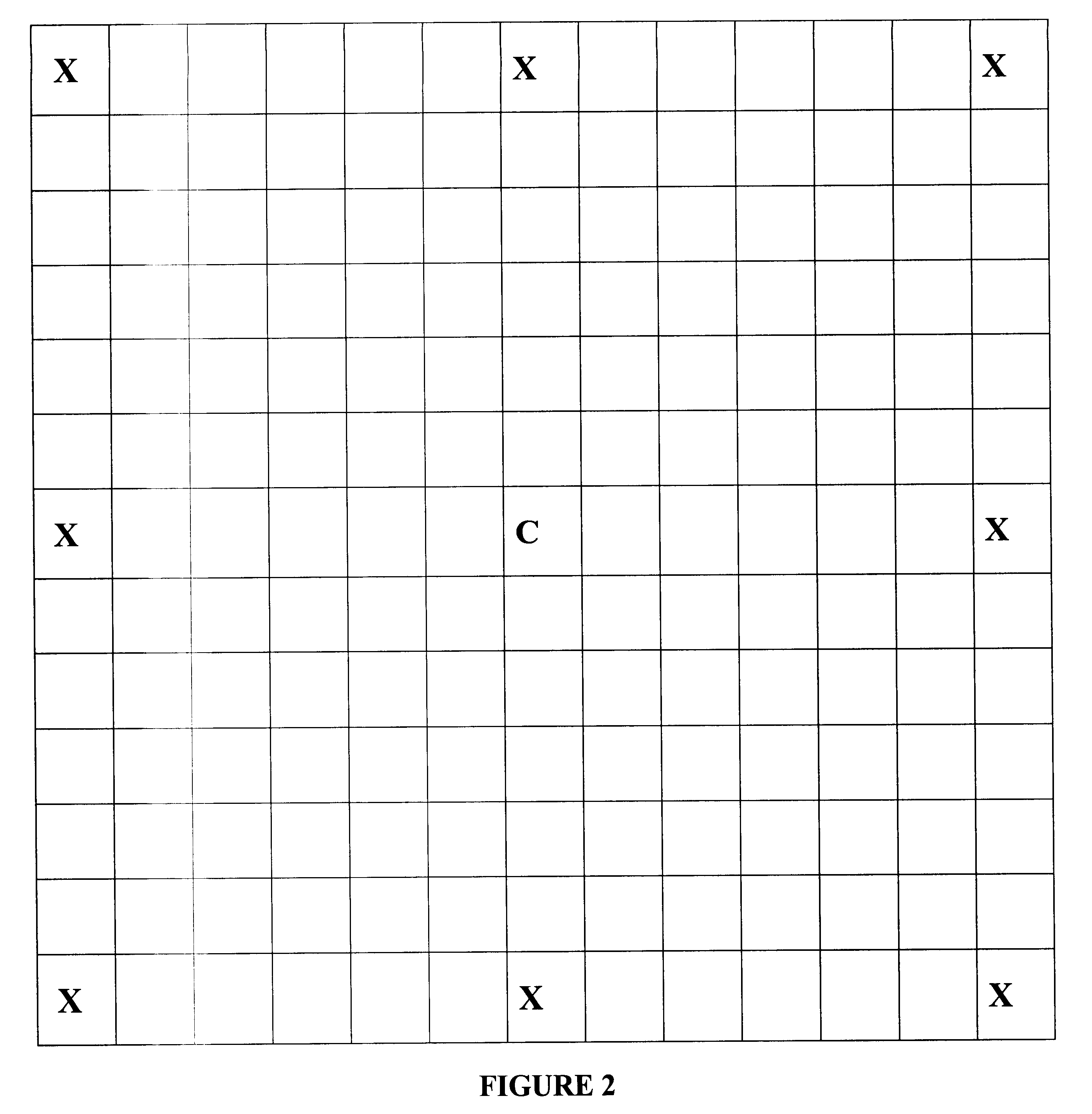These techniques do not however distinguish between
noise and image edges as far as enhancement is concerned, and the higher the density Di or D the greater the enhancement.
However, there arises a problem in reading an original image such as a photograph or a painting having thick portions and thin portions provided as a dot image by a half tone
etching method.
More specifically, because of the relation between the
pitch between each of the dots and the reading
pitch by the image
pickup device, or of a subtle deviation of phase based on the period and the like in half tone
processing, a periodical pattern of thick and thin portions called moiré pattern is generated, providing trouble in viewing.
Examples of undesirable moiré patterns are those formed in computer monitors or by overlap of color separations in
color printing.
One area in which moiré is a particular problem is in
digital imaging, where images are formed as regular grids of picture elements or pixels.
Typically, the
scanner contains a
detector such as a CCD (
Charge Coupled Device) array and the spacing of the array interacts with the spacing of ink dots to produce an undesirable moiré pattern in the scanned image.
Thus, approaches for removing moiré using blurring are completely unsuitable for removing this type of defect since blurring sufficient to reduce the bands will completely destroy small, and often
medium scale, detail in the image.
No generally applicable and straightforward methods exist for achieving this objective.
This approach does not admit
automation and requires that there must first be available a method of editing look-up tables, something not normally found in
consumer software.
In practice it is very difficult to accomplish the disclosed correction in a way that leaves the edges of bands looking natural and blended with the image.
Another
disadvantage of this method of band
elimination is that, while the alteration may lead to reduction in banding, it also influences the same color channel in regions of the image where there is no banding.
This introduces new defects.
A further
disadvantage of this approach is that it reduces the total number of colors in the image.
In summary, the success of the published procedure depends very much on the specific
image content, requires great skill and familiarity with
image processing concepts, must be accomplished by time-consuming region-by-region correction of the image, and cannot be automated.
Comput., v.18(10), 843-8 (2000)) non-uniform
resampling of the image in the
scanner introduces extra
aliasing components and complicates the moiré pattern.
However, the moiré pattern cannot be eliminated by this method when the reading
pitch (the pitch between pixels in the image
pickup device) itself is the cause of the moiré pattern.
However, the moiré pattern cannot be eliminated in all of the images having thick portions and thin portions even by this method when a plurality of images with thick portions and thin portions having different dot pitches are included in the original image.
Accordingly, when
intensity change of the original image has periodicity such as in a half tone image, there is a possibility of formation of moiré in a recorded image due to interference of the periodicity of the
intensity change of the original image with the pitch of the
image sensor arranged in the
line sensor, that is, the sampling period.
However, when intensities of a plurality of pixels are averaged to eliminate a moiré, the
resultant character image or continuous-tone image may be undesirably blurred.
Therefore, there is a problem in that when a mesh image and a character image or a continuous-tone image are mixed in one original image, the averaging process must be applied only to the mesh
image area.
However, such methods have been associated with the following drawbacks: (1) if the original image is a screen-tone image such as a printed image, the copied image may show stripe patterns which do not exist in the original image; and (2) if the original image contains line-tone images or characters, the
image quality may be deteriorated as the edges are broken by the
dither method.
Hence, the ideal case typically cannot practicably be realized.
In fact, the closer the
spatial frequency and the spot frequencies are to each other, the lower the moiré beat frequency νMoire and the more visible and objectionable the moiré interference pattern becomes.
From an operating standpoint, the moiré
interference phenomenon poses a serious aesthetic problem, since the best
electron beam focus and highest
image resolution results in unacceptably noticeable moiré patterns if the video
signal being displayed includes alternating pixel patterns, which is a common occurrence.
The lower amplitude spot sinusoid results in a decrease of the amplitude, and therefore
visibility, of the resulting moiré interference.
When viewed by a user of the CRT, optical cancellation of the moiré interference patterns results.
 Login to View More
Login to View More  Login to View More
Login to View More 


